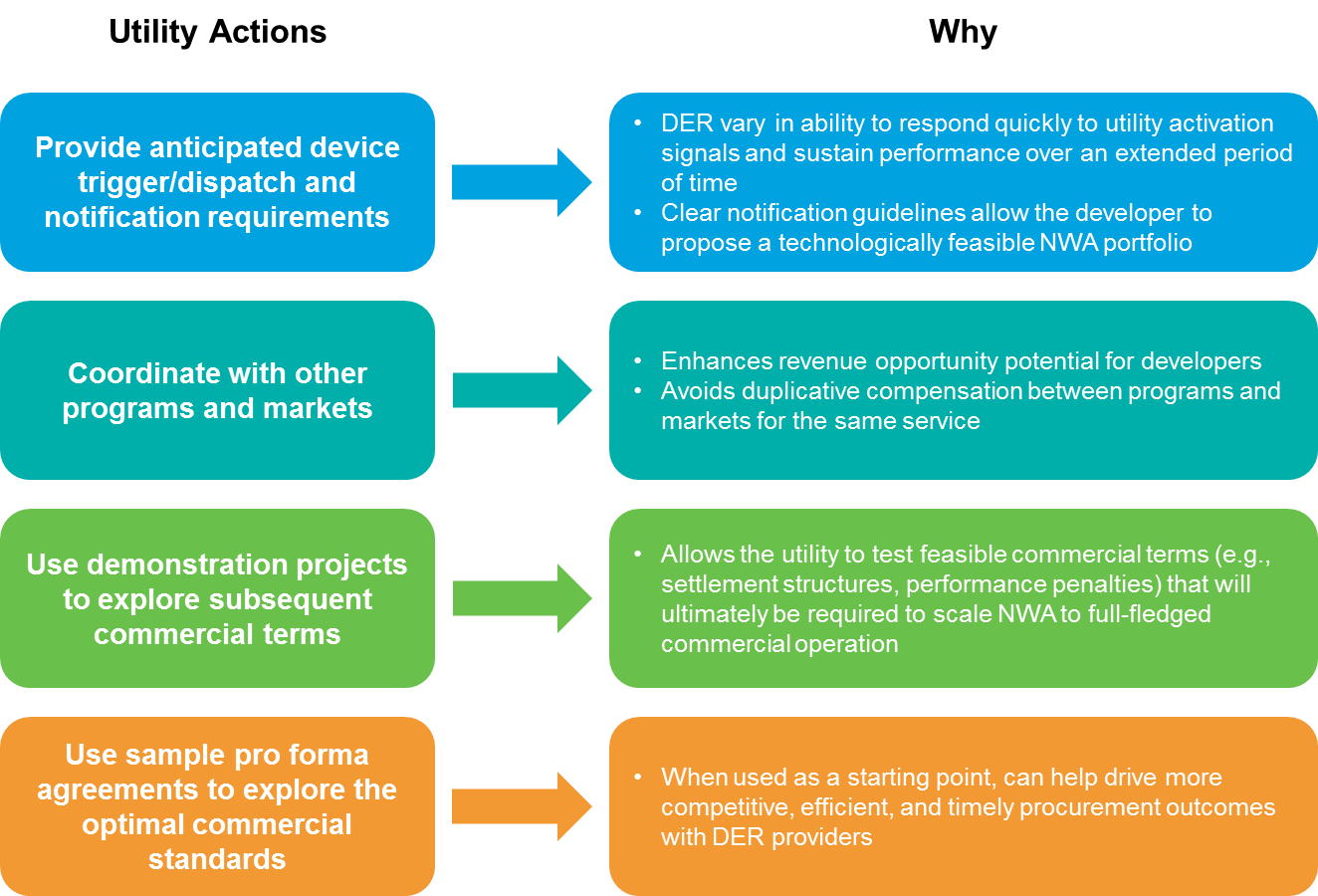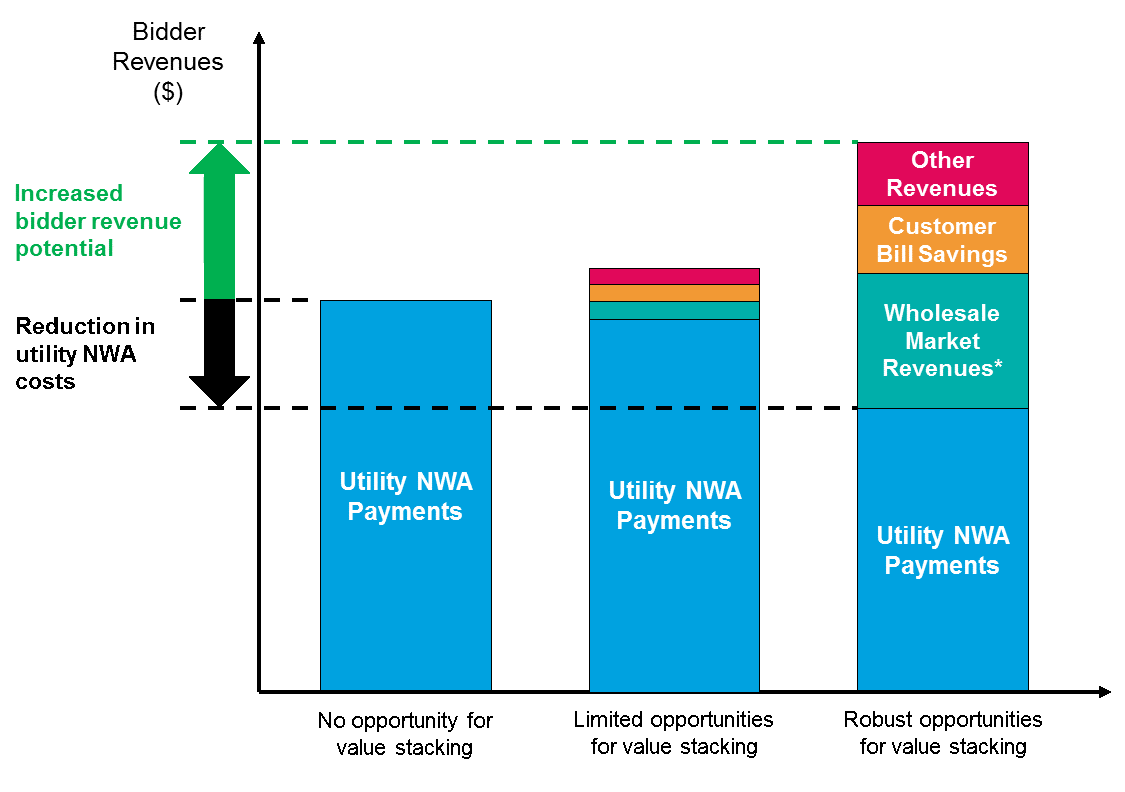
How to 'stack' your way to a successful NWA
Utilities, stakeholders, and regulators need to think carefully about how to implement NWAs in the most advantageous way.
With over 100 non-wires alternative (NWA) projects in various phases of development across the country, distribution-level NWAs are gaining momentum. In fact, they’re becoming the go-to solution for many stakeholders when it comes to solving issues on the distribution grid.
If you haven’t heard about them yet in your service area, you will soon. Utilities, stakeholders, and regulators need to think carefully about how to implement NWAs in the most advantageous way.
The value in the nitty-gritty details
The industry has progressed on several aspects of creating NWAs, including identifying system needs through distribution planning, NWA suitability criteria, and RFP and solicitation best practices.
However, a new focus can potentially deliver value to both utilities and developers: figuring out the right set of NWA contract details to maximize additional revenue streams beyond utility NWA payments.
Enabling additional revenue streams potentially leads to lower utility costs, an increase in the number of competitive and cost-effective developer bids, and greater flexibility in assembling a viable portfolio.
In New York, the Joint Utilities of New York (Joint Utilities) are actively working on the mechanisms outlined in detail below in order to maximize the chances of having a successful NWA solicitation (figure 1).

FIGURE 1: UTILITY ACTIONS TO PROMOTE A SUCCESSFUL NWA
Why this matters: more revenue, more value, better bids
The thread that ties the four items in Figure 1 together is called “value stacking” — the practice of allowing resources to provide and be compensated for services provided to multiple entities (e.g., customers, distribution utilities, wholesale markets). By maximizing value stacking opportunities, utilities can potentially reduce NWA costs, expand the pool of bidders, and increase the odds that NWA bids will result in a positive benefit-cost ratio.
Most NWAs to date have been structured around a narrowly-defined utility need, such as local load relief during peak hours. Most load relief needs are limited to certain peaking hours for a subset of months (e.g., for a summer-peaking area, the utility may only have a localized loading issue from 3:00-7:00 PM during the months of June-September). That should in turn give ample opportunities for NWA resources to target other revenue streams at other times.
By clearly articulating rules and contract terms during the RFP and solicitation phases, including when the utility needs the NWA portfolio to perform, the utility will preserve its ability to have the first call on resources for reliability purposes. At the same time, utilities can enable developers to maximize other sources of revenue.
The ability to stack revenues from other sources can have several benefits — not just for developers and vendors, but for utilities and their customers (figure 2). Most significantly, it can reduce the amount of revenue the developer is seeking through utility NWA payments, leading to utility (and customer) cost savings. But in addition, there can be other potential positives; for example, the pool of NWA bids could increase due to an expanded ability for developers to target additional revenue streams and submit profitable projects, which leads to a greater likelihood that utilities will receive bids that meet their needs in a cost-effective way.

FIGURE 2: DELIVERING BENEFITS TO UTILITIES AND DEVELOPERS
These potential benefits are worth pursuing, but there are two important considerations to keep in mind:
1. Contingency-based NWA may have more limited opportunities for value stacking.
If utilities develop contingency-based NWAs that reserve the right to call on the NWA in near-real time (e.g., within 1-2 hours), the shorter notification window could create challenges for value stacking. For example, if all or part of an NWA is comprised of energy-limited resources (e.g., energy storage), the developer needs to ensure that those resources are fully replenished (assuming the NWA developer requires the full capability of the energy-limited resources to fully meet an NWA event) at the beginning of an NWA event.
However, if those same resources are targeting other revenue streams beyond the NWA and there is insufficient time to fully replenish prior to the NWA event, the developer could be subject to utility penalties for the shortfall in capability. Given that value stacking creates an additional level of risk for the developer, NWA bids may become higher in price and result in a smaller pool of cost-effective NWA.
2. Distribution-level NWA efforts across the country are still in early days.
Utilities and Independent System Operators (ISOs)/Regional Transmission Operators (RTOs) are still in different places when it comes to NWA development and market reforms. It is critical for utilities to continue working with state regulators and stakeholders to figure out a) how best to develop and integrate the NWA process into utility distribution system planning and operations, and b) the appropriate regulatory incentive structure.
On the ISO/RTO side, FERC Order 841 and the recent FERC technical conference on DER aggregation participation in wholesale markets will continue to support DER wholesale market participation. But further work is still needed to develop the operational coordination frameworks to enable DER provision of both wholesale and distribution services.